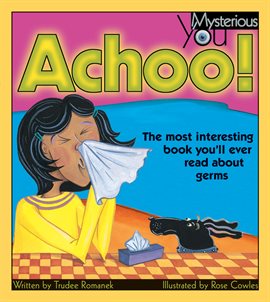Positively Polar Bears!
Sea Bear: a Journey for Survival written and illustrated by Lindsay Moore
A polar bear waits patiently for spring when the ice breaks up, but after months of hunting, paddling, and resting on ice floes, summer ends and the bear must swim very far to find land. Includes facts about polar bears and the effect of climate change on their environment.
Roly Poly by Mem Fox
Roly Poly the polar bear never wanted a brother, but then little Monty arrives and Roly Poly has to adjust to his new sibling.
Caspian Finds a Friend by Jacqueline Véissid
Caspian lives alone in a lighthouse surrounded by the cold gray-blue sea, longing for a friend; so one day he puts a message in a bottle and floats it away in the sea–but the friend who finds it is someone completely unexpected.
What if …? Then We: Short, Very Short, Shorter-Than-Ever Possibilities by Rebecca Kai Dotlich
Two polar bear friends have a thrilling adventure as they imagine solutions to a variety of possible situations; their story will show readers how to create their own tales in response to the question “What if…?
You’re Snug With Me by Chitra Sounder
A mother polar bear answers the questions of her two curious cubs about what lies beyond their cozy winter den as they wait for spring to arrive.
Leaf written and illustrated by Sandra Dieckmann
When a polar bear arrives unexpectedly in the woods, the animals fear and avoid him, suspecting him to be dangerous – and his habit of collecting leaves only adds to their distrust. Then one day, they watch as he attempts to fly over the water with wings made of colorful leaves … just trying to go home. Maybe he needs some help?
Welcome written and illustrated by Barroux
After the ice they’re living on breaks, three polar bears drift away and must find a new home.
Pup and Bear by Kate Banks
A stranded wolf cub is rescued and raised by a loving polar bear, and years later when he is grown into a wolf and on his own, he comes upon a lost polar bear cub, and the cycle begins again.
The Bear Report written and illustrated by Thyra Heder
Sophie is uninterested in writing a research report on polar bears until a polar bear named Olafur swoops her away to the Arctic, where she learns all about the playful bear’s habits and habitat, from glacier mice to Northern Lights.
Polar Bear Morning by Laura Thompson
A little polar bear cub ventures out of her den for the first time and meets a new friend.
Nanuk the Ice Bear written and illustrated by Jeanette Winter
At the top of the world, a polar bear hunts, swims, courts, raises cubs, and worries as they go off on their own.
Ice Bear and Little Fox by Jonathan London
Describes how a polar bear and the little fox that follows it survive over the course of a year in the Arctic. Includes afterword with facts about Arctic animals and Inuit peoples.
Ice Bear: in the Steps of the Polar Bear by Nicola Davies
Huge, magnificent, and solitary, a polar bear moves through the frozen Arctic. Powerful hunter, tireless swimmer, tender mother, gentle playmate — she is superbly adapted for surviving, even thriving, in this harsh and icy climate. Written in poetic language interspersed with fascinating facts, Nicola Davies’ breathtaking tale of this massive, stark white animal is brought to life in striking paintings by Gary Blythe.
Polar Bear Science Experiment: http://preschoolpowolpackets.blogspot.com/2016/01/polar-bear-science-experiment-stem.html
Polar Bear Paw Print Art Project: https://thecraftyclassroom.com/crafts/arctic-art-projects-for-kids/polar-bear-paw-print-art-project/
Polar Bear Paper bag craft: https://www.craftsonsea.co.uk/paper-bag-polar-bear-craft/
Polar bear masks: https://minnesotaminiaturesmarket.com/2017/12/egg-carton-masonry/




